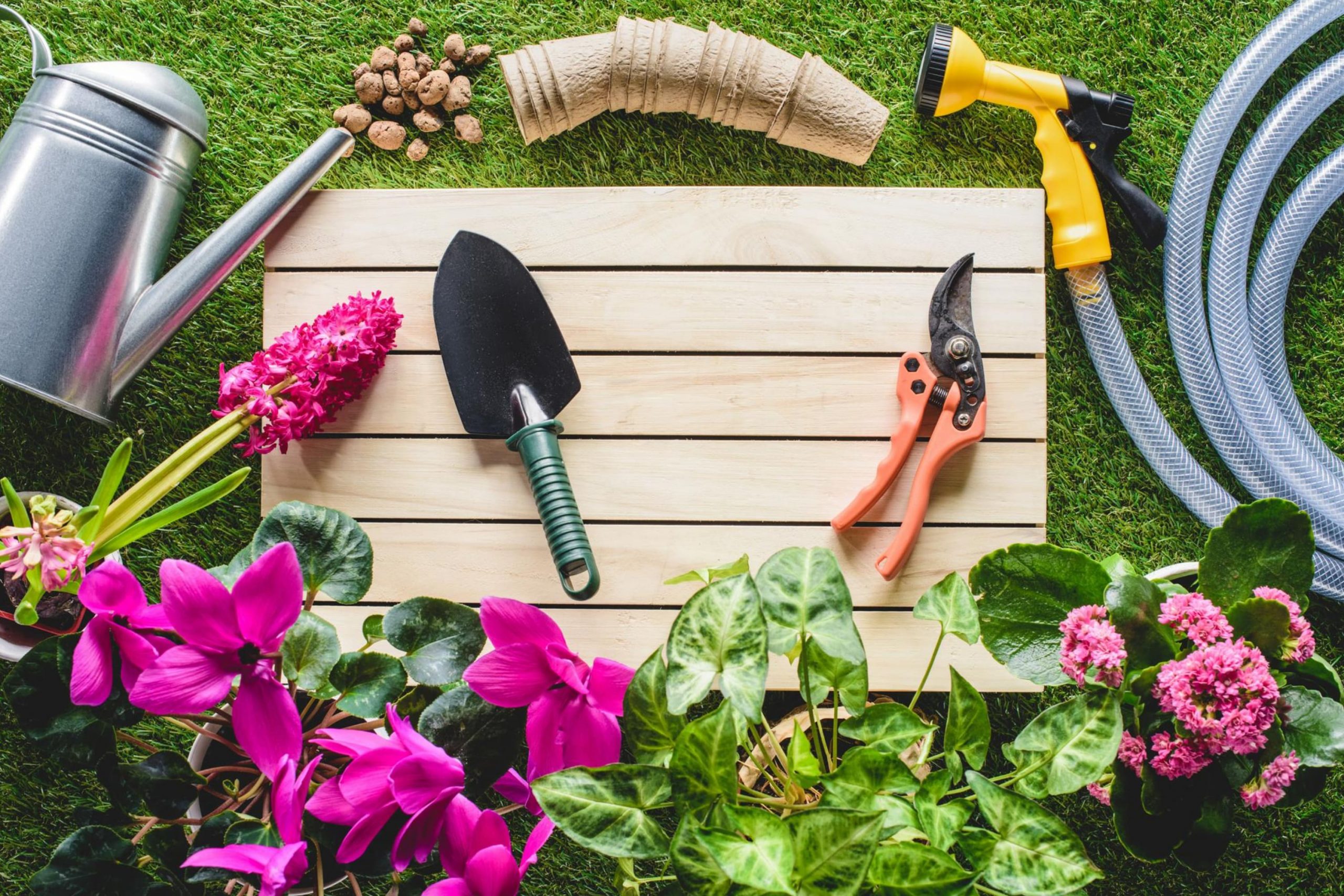Having an ideal and beautiful lawn is a dream of many homeowners. However, it only seems that growing a lawn is simple. In fact, growing grass to make it look as awesome as in the picture in a gardening magazine is a great challenge!
One of the most frequent questions that homeowners and enthusiast gardeners have is about watering grass seeds. How to do it correctly? How often should grass seed be watered? Can I over-water grass seed?
In this article, we will do our best to give you all the answers in detail. After you read this article, you will be aware of how long grass seed is able to last without water, whether or not it is possible to water your seeds too much, and how often you should water your grass seeds after they are planted. Like that, you will be able to grow an awesome lawn without much effort!
How Long Can Grass Seed Go Without Water After You Plant It?
Some of you may think that growing grass is easy, but experienced gardeners will tell you that it is quite a tricky process in fact. See, how easy or difficult it will be to grow grass for you depends on several factors:
- the type of soil you plant the seeds in
- the sort of grass you are using
- the climate in your area
Some sorts of grass need a different watering schedule and they might grow slower or, on the contrary, faster than others.
However, there is one aspect that is more or less common for any type of grass. We mean the amount of time grass seeds can last without water.
In general, if planted grass seed is not provided with daily water, most of it will die.
It will lead to the seed drying out, of course, and it will not be able to continue its germination process. Once it sprouts, grass seed can survive a day or two, but it won’t last much longer without new moisture.
You probably know that people freak out if they accidentally missed a day of watering grass seed! But is it really so bad and can lead to your seeds’ death? Let’s try to figure it out.

How Often to Water Grass Seed?
One important thing you need to know about growing grass is the watering scheme for the new grass seeds. As we have already mentioned above, the amount of water required for growing grass seeds depends on several factors.
For instance, your location or the season can have a serious impact. But most gardeners can expect to water daily, two times a day, for about a 5 to 10-minute period until new grass germinates.
After the new grass germinates, you can reduce the watering and do it once a day, but in a longer session instead of several short but frequent ones. Remember that the watering frequency should slowly decline to about a 40-minute soak every other day!
Once the grass is strong enough, you can reduce the frequency of watering sessions to twice or three times per week.
There is another factor that we would like to draw your attention to. When watering your freshly-seeded grass lawn, it is essential for anyone to remain consistent. Avoid watering unevenly, leaving certain areas of the lawn soaked with water and others being underwatered.
It is especially crucial for those who are using sprinklers or water their lawns by hand! Remember a simple rule of thumb: water your grass seeds evenly. Make sure that they all get the same moisture levels.
Of course, you should realize that these are the general requirements to keep your germinating grass seed healthy.
There are specific conditions, however, that do have unique rules to follow for gardeners. Below, we offer you a list of them. Like that, you can be prepared in advance and know what to expect when over-seeding, seeding to build new lawns, and solving patchy lawn issues.
Over-Seeding to Thicken Your Lawn
Most gardeners agree with the effectiveness of over-seeding. It is a simple way to thicken your lawn for the next growing season. In addition, many people find over-seeding to be an ideal method of repopulating a lawn if it is patchy or thinning.
People who use this method will need to water their lawn twice and do it daily in the newly planted areas. You will also need to continue this process until the new grass appears.
After a week of watering according to the provided schedule, reduce it to one watering session per day.

Building Entirely New Lawns
Gardeners who sow a new lawn with grass seed need to follow a full watering schedule with soil prep, post-planting irrigation, and germination irrigation. You also should avoid watering a new lawn any longer than three or four minutes at once.
If you water for a more extended period, it could lead to over-watering issues.
Anyone who does over-water will likely see a puddle or run-off forming on their lawns. These are classic signs of an over-watered yard, which will only provide detrimental results.
Solving Patchy Lawn Issues
Patch lawn issues aren’t only solved with over-seeding. The over-seeding process is only usable on large-scale problems for patchy lawns. Hand-watering is the preferred method when dealing with small patches of dead grass.
In these cases, you’ll want to keep the new seed moist by hand-watering with a can twice a day.
So, now you know how much time grass can last in general if you miss a watering session. As you know now, nothing horrible will happen, but still, you should not forget about watering a newly seeded lawn if you want to grow grass as soon as you can.

What Happens If You Forgot to Water The Grass Seed?
This is a logical and quite a frequently asked question that often comes from enthusiast gardeners who lack experience. What happens if you forget to water the grass seed? In general, everything should be fine if you miss a day of watering your grass seed.
But if you skip two days or three days, things might start getting a little uncertain.
See, once grass seeds spend two or three days without water, they can start dying. Eventually, it will require you to start over. The seeds also won’t germinate without water, and the soil can dry out quickly.
But if you have only missed a day or two, here are a few life hacks that can help you get your grass seed back to life:
- During the next watering, rehydrate the soil fully to ensure it is wet down to around 5 inches
- Morning watering sessions are recommended. Stick with them and a consistent watering schedule to ensure better growth
- Avoid disrupting the soil as much as possible. Try not to walk over it, don’t keep heavy objects on it, etc.
If you are overly concerned about your grass seed’s condition, you might find it helpful to use high phosphorous seed-sprouting fertilizer to support it. It is worth trying for anyone who has missed more than one watering day.
How Long Does Grass Take to Germinate?
Now you know the approximate amount of water grass seed needs for growing. Since this is clear, let’s try to figure out how long the germination process might take.
It is essential because, like this, you will be able to know when the watering schedule can be brought down from two watering sessions per day to one session per day without damaging the seeds.
So most gardeners can expect their grass to start germinating between 5 and 30 days after the seeds were planted. But, of course, there are many factors that will be contributing to how fast or whether your grass grows.
Below, you can check out a quick overview of reasons to learn why your grass could be having germination issues:
Timing
Timing is everything when growing grass seed. And it often happens that gardeners poorly time quite many things during this process. For instance, you can plant grass too close to a frost period or let too much time pass between watering the soil.
These issues will lead to poor grass seed growth. This is why we recommend you research the weather and maintain a strict watering schedule. Like this, you can make sure that the seeds you plant will have no issues while growing.
Seed Type
As you already know, different types of grass seeds grow differently. Certain types of seeds do much better in specific growing conditions and regions, for example. Others need a distinct watering schedule.
This is why it is essential to know what seeds will work best in your area. You can easily find this information by Googling it or asking a professional gardener for some advice. Like this, you will make sure that you avoid growing grass that doesn’t match your climate.
Otherwise, this entire process of grass planting and growing will end up being a waste of your valuable time and effort.
Coverage Rates
Each bag of grass seed usually comes with a coverage rate indicated on its package. For example, one might need six pounds per 1,000 square feet while another requires two pounds of seeding for 100 square feet. You should refer to this information when picking out the right seeds. If you pick the wrong coverage rate, this process won’t meet your expectations.
How Long Is It Allowed to Store Dry Grass Seeds Before Planting Them?
When you buy fresh seed for your lawn, take note of the expiration date. Grass seed will go bad after a few years, so getting the right amount of seed for your project will give you the best results without leaving you with too much extra seed.
When you store it properly, grass seed will be best used within 2 years of purchase, though some may remain good for up to 10 years, depending on the variety.
The rule of thumb is that a bag will lose 10 to 20% of its collective germination rate per year when storing grass seed.
Temperature, humidity, and exposure to air all affect the shelf life of grass seeds. If unplanted seeds get too moist or too dry in storage, they may spoil and not sprout when sown.

A Few Tips About Planting Grass
In order to grow a beautiful lawn, you need to make sure that a few easy steps are followed. Like this, the grass you plant will grow easily and it will hardly cause any trouble to you.
- Plant seed in early spring and early fall for cool-season grasses
- Plant seed in late spring for warm-season grasses
- Watch the soil moisture levels while growing the seeds
For example, if you have a lot of rain during your grass’s growing period, it might be good on the one hand since it relieves you of your watering duties partially. However, you should still watch the soil moisture levels, especially if the rain isn’t constant.
Also, make sure not to confuse morning dew with a previous night’s rain!
Like that, now you know how much time grass seeds can last without water and when it is time for you to start being worried if you skipped the watering session. Also, you learned what influences the proper grass growth and what you should pay attention to while growing your perfect lawn.
With these tips and recommendations, even such a complicated process as grass growth will take you quite a little effort and result in a beautiful lawn with green and silky grass.

[wp-faq-schema title=”Frequently Asked Questions”]

I’ve just planted grass seeds on my lawn. Does anyone know whether it’s allowed to walk on it now?
No, don’t walk on it and don’t disturb it somehow else! I mean, no pets on the lawn, no kids playing, etc. It can damage the seeds and prevent them from growing.
What’s the best way of watering a lawn? Are sprinklers better tghan using a hose?
Well, I useed sprinklers simply because I’m too lazy to water the lawn myself with the hose! Bedsides, as for me, it’s easier to overwater with a hose. But you might choose the hose if you planted the sort of grass that needss a lot of water, for example.
Hi everyone! I need your advice urgently! See, I missed a day of watering grass seed. Do you think it will die or already died? Does it make sense keep on watering it?
Hello! I don’t think that something awful happened. In most cases, most grass seeds won’t die after missing a day of watering it. However, if the ground dries out, and it most likely will to a sufficient degree, the grass seed will halt its germination process.
I’’m new to growing grass but recently I”ve decided to strat growing a lawn. I chose the sort of grass and I sawed it. And here’s the question: will grass seed germinate on top of soil? That’s because I didn’t saw too deep and now I’m afraid it might not grow.
Hi. Well, yes. In fact, I’d say germination will even suffer if too much soil is placed on top of the seeds. It is even recommended placing a thin layer of mulch or topsoil over the grass seeds to help keep them moist and warm. It also promotes growth. So I guess there’s nothing wrong with your grass and you shall start watering it as soon as possible.
Hello. Thank you for your article. I just want to ask you one more question that I didn’t find the answer to in the article. How long can grass seed be stored? And what storage conditions it needs to meet?
Hello. We are glad that our article helped you. See, you cans tore grass seed for two to three years, if it’s stored properly. However, you need to note that, even in ideal environments, the germination rate will decrease during the storage. As for the storage conditions, in general, a temperature below 60°F and a RH below 60% is safe for most seeds. Also, the longer the storage time, the lower these two factors should be.
Will grass seed grow without watering? I dont’ mean not watering it at all but if I skip a few days, for example.
Well, I’m not a pro, but as far as I know, grass needs regular watering. You may skip one day and leave it unwatered, but that’s the maximum it can survive. So I’d not recommend you do that and test your grass seeds for their survival abilities.